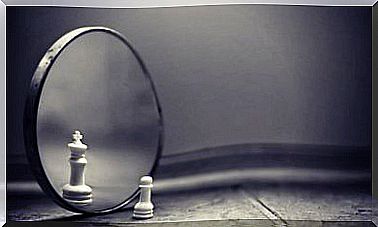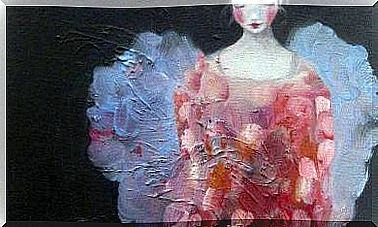The Fortune Teller’s Mistake, Do You Know What It Is?

We all work with expectations and are therefore doomed to fortune teller error. Surely you have ever thought that something would happen in a certain way or that you would feel in a certain way. Also, you have likely completed forecasts about someone’s behavior. In fact we do it every day, at all hours.
The truth is that we spend our lives making predictions about the future. Sometimes we take for granted that things will go wrong without having a rational basis for it. Then the anguish appears and all because of the error of the fortune teller.
The fortune teller’s error is a type of cognitive distortion or a “thinking error”: a “mental slip” that we all hit. In turn, cognitive distortions have been widely analyzed within the framework of cognitive-behavioral psychotherapy, especially in rational emotional-behavioral therapy. Let’s see what it consists of.
Rational Emotional Behavioral Therapy
Rational emotive behavioral therapy (RETT) is a pioneer in many of the ideas it raises and one of the main cognitive-behavioral therapies. The theoretical-conceptual basis of this type of therapy is found in cognitive psychology and behaviorism.
This type of therapy is a psychological school composed of several authors who all share the use of a scientific methodology and basic principles. Some of these principles are as follows:
- Individuals respond to cognitive representations (interpretations, perceptions, and evaluations) of environmental events.
- Dysfunctional cognition (wrong thinking) mediates emotional and behavioral disturbance.
- Cognitive change produces emotional and behavioral changes.
- Cognitions or thoughts can be evaluated and recorded.

The term cognitive-behavioral is very generic and refers to therapies that incorporate both cognitive and behavioral techniques. They have an empirical basis (demonstrable) and require the active participation of the patient.
As we said, the error of the fortune teller is a cognitive distortion identified in the framework of rational emotional behavioral therapy. There are other cognitive distortions, but in this article we will focus on this one. According to the TREC, when we commit these cognitive distortions we are distorting reality. As a consequence, we can become anxious or sad.
The Fortune Teller’s Error According to David Burns
Psychologist David Burns includes the fortune teller’s error within another broader category of cognitive distortion: hasty conclusions. According to Burns, hasty conclusions happen when we infer ideas that are not necessarily derived from facts. These conclusions are usually produced by the tendency of our brain to save energy in the processing of information or by the rush that the context can put us to reach it.
Two examples of hasty conclusions are the reading of the thought and the error of the fortune teller. David Burns defines the fortune teller’s error as follows:
“It is as if I were in front of a crystal ball that only predicted sadness. You imagine something bad is going to happen, and you take this prediction as fact (when it is not). Imagine, for example, that high school librarian who repeats herself during her anxiety attacks: I’m going to pass out or “go crazy.”
These predictions were unrealistic because she had never passed out or “gone crazy. ” Nor did she have any serious symptoms suggesting an imminent and utter loss of control.
In a therapy session, a doctor suffering from severe depression explained to me why he was leaving his profession: I realize that I will be depressed all my life. My affliction will go on and on, and I am absolutely convinced that this treatment or any other is destined to fail.
This negative prediction about his prognosis made him feel hopeless. The improvement their symptoms experienced shortly after starting therapy indicated how misguided their prophecy had been. “

We are not fortune tellers, so why jump to conclusions?
We have all drawn a hasty conclusion to answer what they asked us or because we had no patience … and then we have realized the error. Suppose you call a friend and they don’t call you back after a reasonable amount of time.
This fact makes you sad when you tell yourself that your friend probably received your call but showed no interest in returning it. What is the cognitive distortion that you would be committing? The answer is this: read the thoughts of others.
When you feel sad, you decide not to call again or find out what happened. You say to yourself: “He’s going to think I’m a bore if I call him again. I’m going to look ridiculous ”. Because of these negative predictions (fortune teller error), you avoid your friend and feel humiliated.
Three weeks later you find out that your friend had not received your call. It turns out that all that mess didn’t exist beyond your head. You took as fact conclusions that were not correct, from which in turn you drew other conclusions that were even less correct.
As we have just seen, the error of the soothsayer is to jump to conclusions about a fact without having a solid foundation to back them up. When we do this, we are victims of a distortion of thought that will surely make us suffer.









